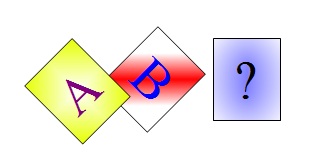
Sanders publishing is not the largest publisher in the Netherlands of puzzles, but it is a publisher with an eye for innovation. And risk. Consider the following puzzles:
1) Crack the code 1
F + A = 6
B + C = 9
C + D = 10
D + E = 11
A + B = 10
E + F + D = 12
Each of the letters A-F stands for one of the numbers 0-6. Several letters may have the same value.
Of course for mathematicians, this puzzle is a set of 6 equations with 6 unknowns. Algebra has the reputation to be very unpopular, so it surprises me that the publisher has already published 5 issues of this magazine.
The limited range of the numbers allows for fewer equations, and here are two examples.
2) Crack the code 2
C x F = 0
E + F = 11
A x B = 12
D x E = 5
B + F = 10
3) Crack the code 3
A + D = 11
E + B = 2
B x C = 6
F * D = 20
E + C = 3
You can find the solutions at 235, 245 and 86.
This is the last post of 2012. 2012 enabled me to publish over 35 posts in this blog, with about 50 puzzles. It looks like, health and wealth permitting, I will be able to continue a weekly frequency in 2013. I look forward to your visits in 2013. 🙂





